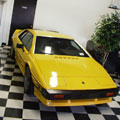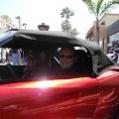Registering the 818 might be an interesting affair, and i'm sure the other kits (roadster, GTM, Etc.) can chime in here as well.
Utah has their own page on the DMV website for this. making it fairly simple.
http://dmv.utah.gov/vehicles-service...:kits&catid=39
As per the website:
All the components are purchased in a kit similar to a model car (including the frame). The applicant will need to provide to the DMV; this may require more than one visit:
The "Manufacturer's Statement of Origin" (MSO) for all components, listing a 17-digit conforming
Vehicle Identification Number (VIN),
A completed
Form TC-569A "Ownership Statement", containing information pertaining to the construction of the
vehicle, where or from whom all the components were obtained, and a completed
Form TC-656 "Application For Utah Title" and all original sales receipts,
Picture of the completed
vehicle or bring the
vehicle to a DMV office for a visual inspection, and
Safety and emission test certification.
The
vehicle must be inspected by a peace officer or by the DMV-CSR prior to titling. On the title, the make of the
vehicle will reflect the make on the MSO, year will be the year of completion and the model will be "replica." The
Vehicle Identification Number (VIN) listed on
Form TC-656 "Application For Utah Title" will be the number on the chassis MSO, if that number is a 17-digit conforming number issued by the manufacturer.
FFR has already Stated they will be providing us with an MSO (Manufacturer's Statement of Origin), and therefore all we'd need left is:
proof of where we acquired the other parts. be it a receipt from a salvage yard, a title for another
vehicle, etc.
a Picture of the completed
vehicle. (a day i believe many of us will sit back, sigh, and wonder what we forgot LOL).
TRAILER the
vehicle to an Emissions/Inspection station to be inspected.
and finally Trailer it again to a DMV office with all the above paperwork items, and receive your Plates, title, etc.
Those in Utah who have previously registered Kit cars, PLEASE respond here with any information or suggestions to those looking to Register Their Kit in Utah.




 Thanks:
Thanks:  Likes:
Likes: 


 Reply With Quote
Reply With Quote



 in that red, white & blue hood !!
in that red, white & blue hood !!







